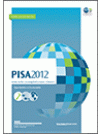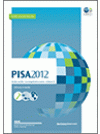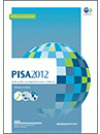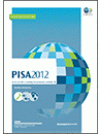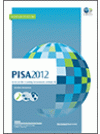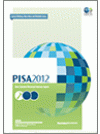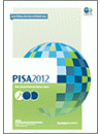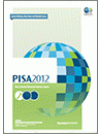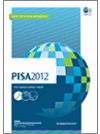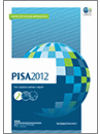What is PISA?
- The Programme for International Student Assessment (PISA) is an international study that assesses and compares how well countries are preparing their 15-year-old students to meet real-life opportunities and challenges.
- This study is an initiative of the Organisation for Economic Co-operation and Development [OECD].
Who takes part?
- Just over half a million students from 65 countries took part in PISA 2012.
- In New Zealand, over 5,000 students (4,291 for core PISA subjects, 958 for financial literacy) from 177 schools took part in the study, in July 2012.
- Schools and students within each school were randomly selected to take part. An international consortium commissioned by the OECD to implement PISA was responsible for sampling schools and students in all PISA countries.
- This cohort of 15-year-olds began compulsory schooling in 2002.
What does PISA 2012 assess?
- PISA assesses three key areas of knowledge and skills – reading, mathematical and scientific literacy.
- The term literacy captures the “capacity of students to apply knowledge and skills in key subject areas and to analyse, reason and communicate effectively as they pose, solve and interpret problems in a variety of situations”.
- In 2012 mathematical literacy was the major focus and reading and scientific literacy minor focuses.
- New Zealand administered assessments in all areas except computer-based problem solving, mathematics and the electronic reading assessment.
- Students and principals were asked to complete a background questionnaire that provides further information to help better understand the data.
How often is PISA administered?
- PISA has been administered every three years since 2000.
- While reading, mathematical and scientific literacy are assessed on each occasion, reading was the focus in 2000, mathematics in 2003 and science in 2006. The cycle began again in 2009 with reading as the main focus.
What can PISA tell us?
- PISA looks at the different factors in the system that contribute to student achievement over time including aspects of family background, the school environment, what happens in the classroom, and students’ own attitudes, experiences and perceptions.
- PISA assesses students who have completed around 10 years of compulsory schooling. It is a snapshot of student achievement and does not measure individual student progress over time.
- However, it monitors overall student performance so that we can observe whether achievement is improving, remaining stable or declining over time. This allows us to monitor progress towards education goals such as raising achievement and reducing inequity.
- PISA also allows us to examine New Zealand’s performance relative to the rest of the world and learn from the experiences of other countries.
Key Results
PISA 2012 – top line results for New Zealand
- Mathematical literacy was the major focus in PISA 2012 and reading and scientific literacy the minor focuses. Financial literacy was also assessed and we will not know the results until 2014.
- In New Zealand, over 5,000 students (4,291 for core PISA subjects, 958 for financial literacy) from 177 schools took part in the study, in July 2012.
- New Zealand students scored above the OECD average in mathematics, reading and science.
- Australia had similar scores in mathematics and reading but had a higher science score.
- New Zealand student performance remained relatively stable up to 2009. Between 2009 and 2012 performance in mathematics, reading and science declined.
The proportion of New Zealand students (below Level 2) increased between 2009 and 2012 in mathematics and science (eg, up from 15% in mathematics in 2009 to 23% in 2012).
These are students who struggle to do mathematics or science and whose lack of skills is a barrier to learning.
- Students who achieve Level 5 or 6 have advanced skills in mathematics, reading or science. In particular, New Zealand has a high proportion of students who are top performers in reading (14%).
- New Zealand has a relatively high proportion of all-rounder students who are top performers across mathematics, reading and science even compared to the top performing countries (21% are top performers in at least one subject area and 8% are “all rounders”).
- New Zealand has a relatively large proportion of both top performers (Level 5 and 6) and low performers (below level 2) in mathematics. In addition, New Zealand is counted among the 10 PISA countries and economies with the widest spread of achievement in mathematical literacy.
- New Zealand students demonstrated relative strength in the mathematical area of uncertainty and data (statistics) and weaker achievement in space and shape (geometry and measurement).
Their performance on change and relationships (aspects of algebra) and quantity (number and measurement) was close to the overall New Zealand average for mathematics.
- Overall boys did much better than girls in mathematics, girls continued to do better than boys in reading and there was very little difference in science.
- Overall New Zealand European/Pākehā and Asian students scored above the OECD average in mathematics and Māori and Pasifika students scored below the OECD average. However, students from all ethnic backgrounds attained scores right across the achievement spectrum.
- The average scores in mathematics for boys and girls and for New Zealand pakehā/European, Māori and Pasifika students all declined between 2009 and 2012, but there was no change for Asian students.
- Overall, New Zealand is a country characterised by relatively high achievement (when compared to the OECD average) but the distribution of student performance shows that we have relatively low equality (equity) in learning outcomes.
- New Zealand is a country where the variability of student PISA mathematics scores within a school is high while the variability in scores across schools is relatively low. However, the variability in scores across schools is increasing.

